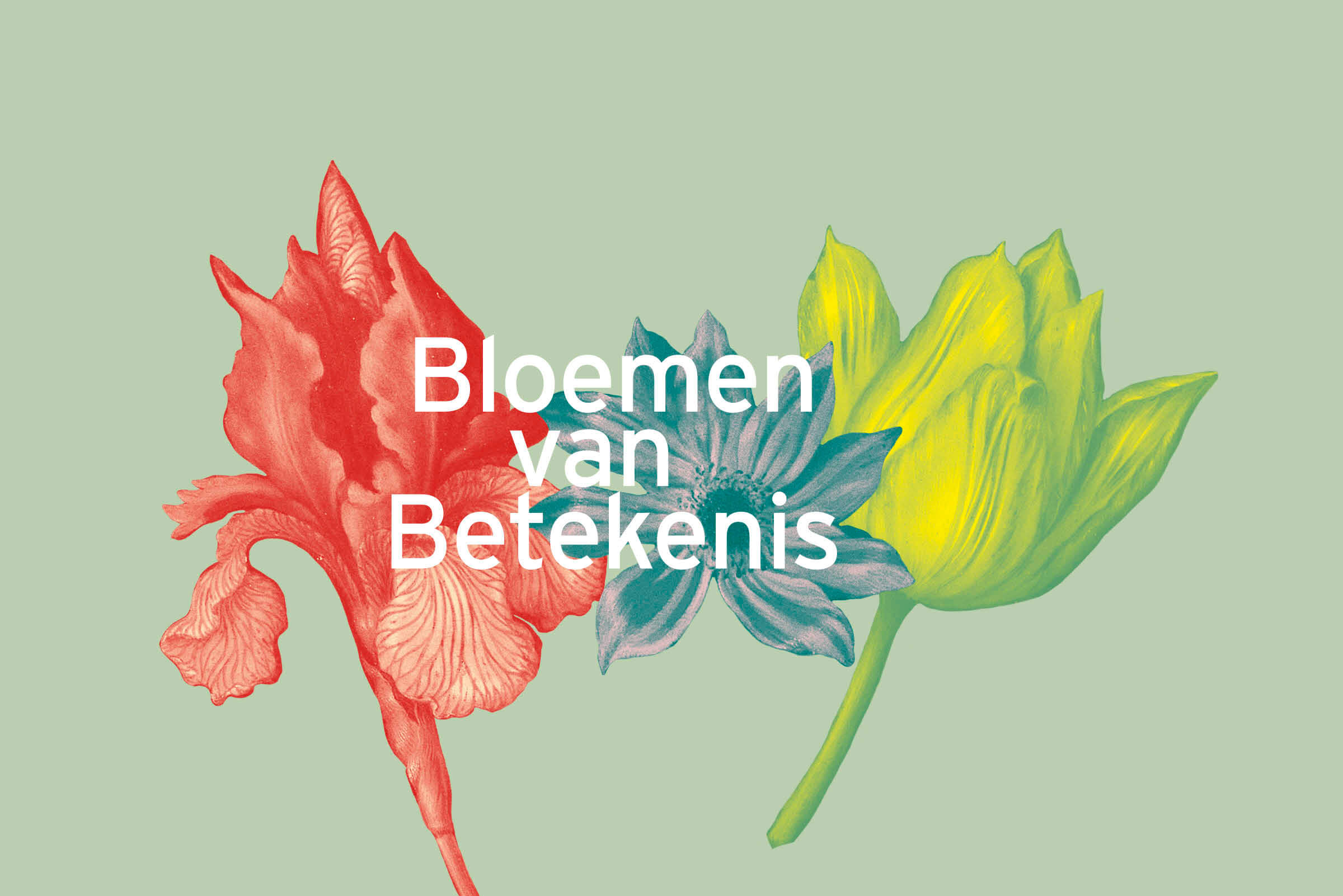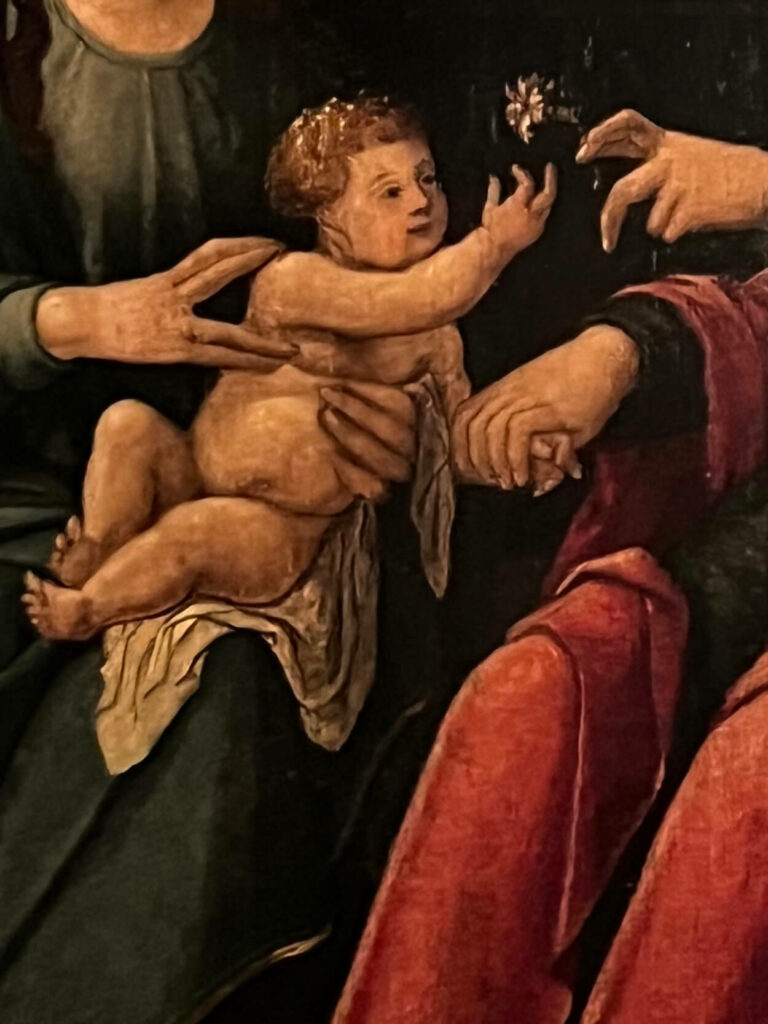
St Anne Trinity
Anne, mother of Mary, offers her grandson Jesus a carnation. Depictions of these three figures together are often referred to in Christian iconography as a St Anne Trinity. In traditional renderings, Mary is shown sitting on her mother’s lap. Carnations have appeared in floral still lifes, religious paintings and portraits since the fifteenth century.
Divine flower
By offering the child a carnation, St Anne is symbolically recognising Jesus as Christ the Saviour, the Messiah. A carnation is called dianthus caryophyllus in Latin. Dianthus, from the Greek Dios anthos, means divine flower, and in religious art the flower is associated with Christ. In portraits, a carnation often emphasises the sitter’s Christian faith.
Nail from the cross
The second part of the carnation’s Latin name is Caryophyllus, meaning clove. This is derived from their characteristic fragrance, which is reminiscent of cloves. Because of its shape, which resembles a nail, the clove has come to symbolise the passion of Christ, and so too the carnation’s shape also suggests the nails with which Christ was fastened to the cross.

